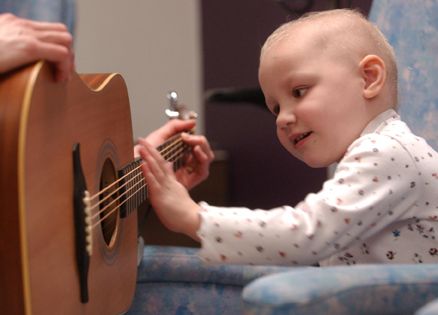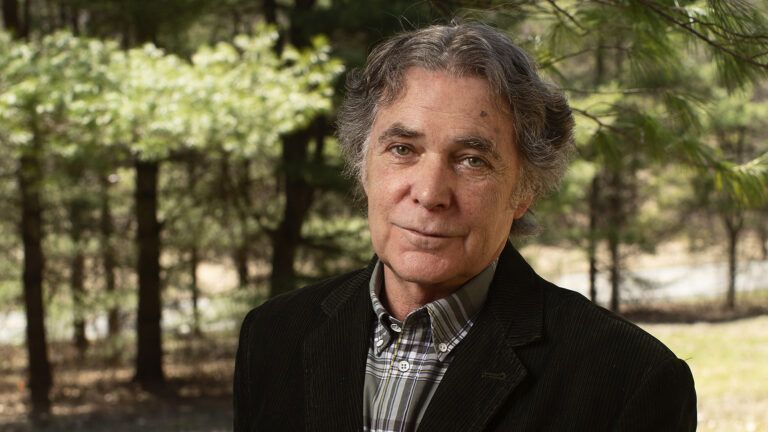Thanks to movies like Patch Adams, most people are familiar with laughter’s positive effect on young patients, but in hospitals throughout the country a lesser-known but powerful treatment has steadily gained popularity and recognition: music therapy.
Music therapy benefits patients of all ages: from using lullabies to aid the development of premature babies in neonatal intensive care units to playing big band songs to boost elderly Alzheimers patients’ spirits and appetites. It’s used to help alleviate pain; elevate mood and counteract depression; promote movement for physical rehabilitation; calm or sedate; induce sleep; reduce stress and fear; and relax muscles.
Though discussion of music’s healing effect dates back to Aristotle and Plato, the 20th century discipline began with the World Wars, when musicians visited hospitals to help ease veterans’ physical and emotional trauma. The patients’ positive responses led several hospitals to hire musicians as staff, but it soon became evident that training was required. The first music therapy degree program was founded at Michigan State University in 1944 and a professional organization, The American Music Therapy Association (AMTA), was founded in 1998.
“Often when people hear music therapy there’s a misconception that it’s just a diversional activity; it’s just playing music and having fun,” says Al Bumanis, AMTA spokesperson.
But Kirsten Nelson, a senior music therapist at the University of Iowa Children’s Hospital has witnessed the many forms of music’s healing power. She serves in-patient pediatric patients aged from birth to 20 years old. Helping children with chronic health issues and short-term patients in pain, her work takes her throughout the facility: to hemotology, oncology, cardiology, post-operative and intensive care.
She’s part of a new core team for pediatric palliative care, providing comfort and relief from symptoms like pain and anxiety and improving quality of life for children facing a limited life span. How does she cope with seeing children suffering each day?
“Faith is huge part of my work,” says Kirsten, whose father was a minister. And, she adds: “The change that I see in these children is what feeds me.”
To determine what will best help each patient, the therapist speaks with the patient, their family and their referring doctor, says Jenny Plume, a music therapist at Monroe Carell Jr. Childrens Hospital at Vanderbilt, in Tennessee.
“Each day is a little of everything,” says Jenny. A kid who doesn’t want to get up? She’ll start a parade. A child dealing with chronic pain? She’ll combine guided imagery with steady sound to help the patient learn how to manage pain perception. Her day might also include helping calm a patient heading into surgery.
Instrumental music can work wonders for reducing stress in patients young and old. Pianist and composer Jeff Bjorck recently created a CD for a children’s hospital ministry. Though he’s been composing since he was a child, his job as a clinical psychologist means music is a part-time vocation, but one he is passionate about—especially if it helps others.
“I was making CDs but really wanted my music to be a blessing to people,” says Jeff. “I asked the Lord to let me do that.” Jeff suggested to a friend in the pediatric psychology department of City of Hope, a local cancer hospital, that his CDs might be useful in helping children relax during chemotherapy, and might also help relax their parents so they could get much-needed rest. The friend happily obliged.
“I love hearing that my music is an encouragement to someone, especially someone who is hurting,” says Jeff. “I remember thinking when I was composing as a teenager, no one will ever hear this. Now, knowing that children are finding solace while in a hospital, during chemotherapy, or when mommy has to go home, to imagine a crease of stress melting from a child’s face, it means the world to me.”





